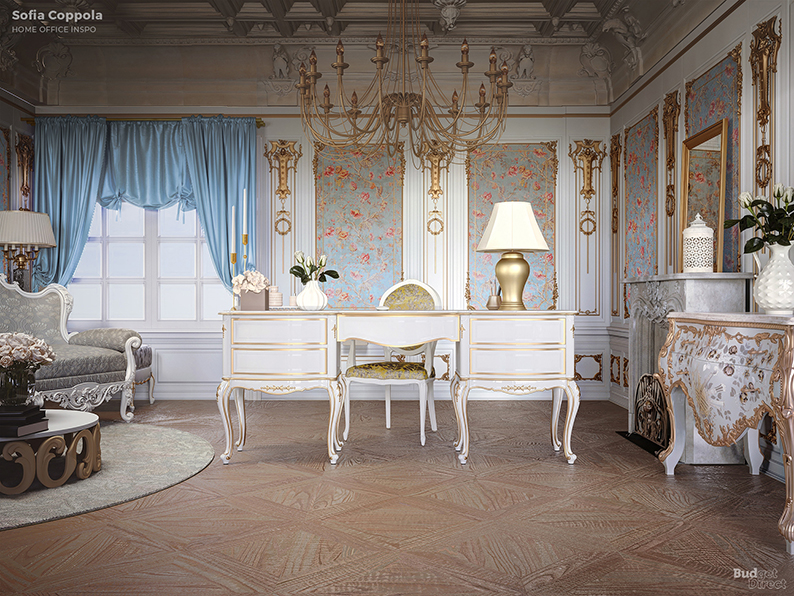
In terms of interiors, Sofia Coppola is best known for the dark luxurious modernism of hotel rooms in "Difficulties of Translation". But with each subsequent film, she gradually moved on to more vintage images filled with pastel tones and exquisite details.
At the same time, her own house is simpler. Here's how she puts it: "My apartment is quite calm and restrained. I like the clean white background of the walls, shaded by lots of pink peonies." The designers turned to her work, rather than personal preferences: there is a vintage dressing table, baroque curves and lots of pale blue and gold flowers.
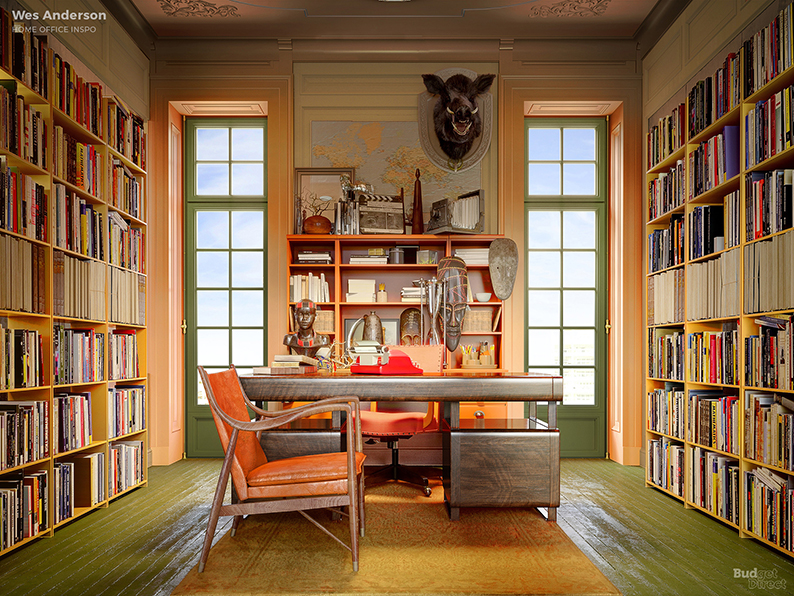
With each new film, Wes Anderson turns more and more from a director to a designer for the films he makes. He designs the space of his film sets, focusing on symmetry and flat composition, in order to present his characters in a world that is partly a theatrical stage and partly an expressionist dream world.
This Wes Anderson-style home office takes us back to the era of the Tenenbaum Family. The creators combined organic colors and an "artistic" mess with a scrupulously thought-out form of furniture.

The Wachowskis achieved success with their second film, The Matrix, and it was he who inspired this image. The film and its sequels are made in the aesthetics of cyberpunk, which even now remains iconic — and funny: it is now obvious that the Internet era actually looks completely different from the movies.
The Wachowski-style office combined a little bit of everything. There are post-industrial furniture and fittings, old office furniture from the 1980s, and repurposed wood combined with neon.
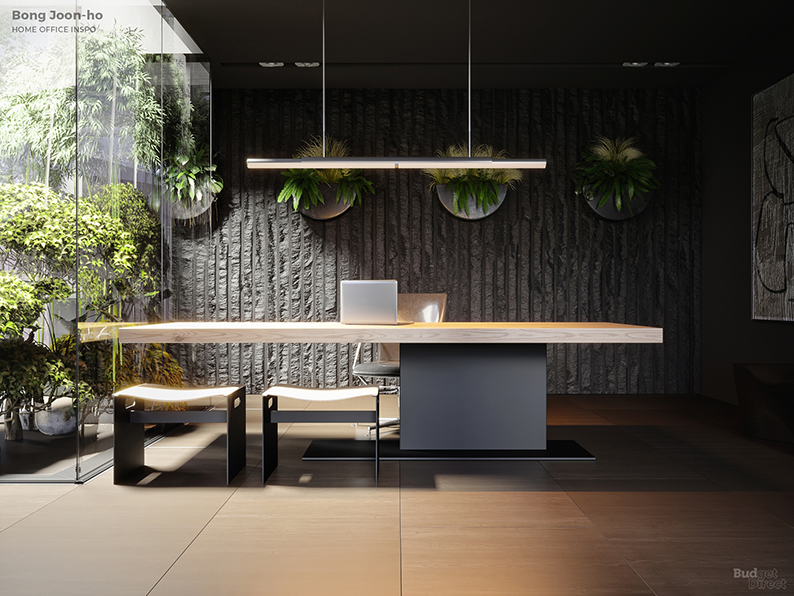
Korean director Pong Joon Ho achieved international fame in 2019, when "Parasites" became the first non-English-language film to win an Oscar. But film lovers were already familiar with his works — from the cool and satirical "Memories of Murder" to the science fiction film "Through the Snow" in the style of Kubrick with Chris Evans and Tilda Swinton.
Jun Ho's diverse filmography did not prevent him from developing a unified visual style. The glass modernism with a hint of wildlife in "his" office perfectly reflects this. Special attention is paid to light sources: large windows with natural light, reflective screens and spectacular fittings. The unusual geometry and textured surfaces serve as the finishing touch.
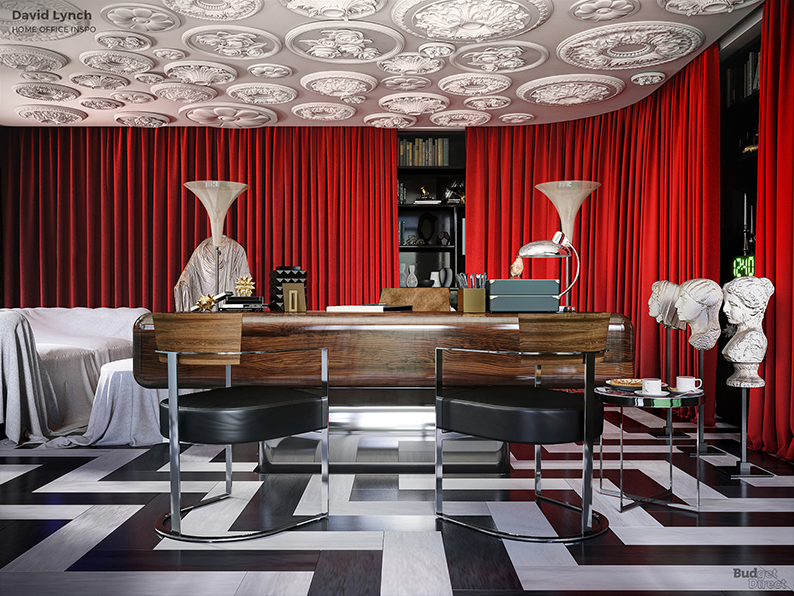
Of course, we know exactly what David Lynch's home office looks like, thanks to his YouTube show. This is an example of a room decorated in the style of his work.
Yes, Lynch's first full-length films were in black and white, and in "Dune", although it is a color film, there is a lot of black color. But starting with "Blue Velvet," the director showed us how to make the primary colors equally stylish and creepy. The study is inspired by the famous red room from Twin Peaks.

The worlds of Jean-Pierre Jeunet are not always the places where you would like to live and work. But his bitter fiction "City of Lost Children" and the post-apocalyptic weird comedy "Delicacies" are as inventive as they are dark. With "Amelie" Genet inspired a lot of people to repaint living rooms.
In "Amelie," he took the dark visual motifs that distinguished his early films, but made them cute and placed them in Paris under a sepia filter. To make yourself a home office in the style of this movie, start with a strict color scheme a la Christmas tree, then search thrift stores, eBay and Avito to find vintage items with a history that seem to live their own lives.
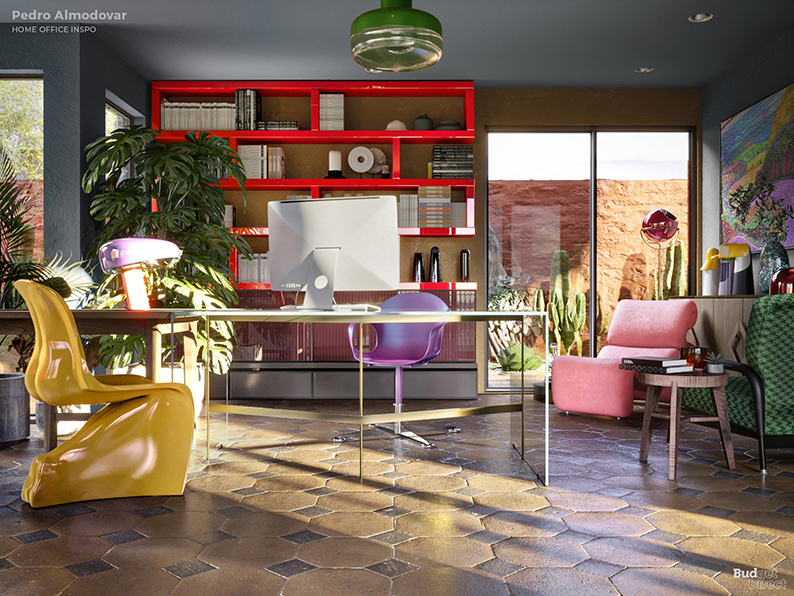
"I wanted to create pop art sets in pastel colors," Spanish director Pedro Almodovar said of his breakthrough 1988 film "Women on the Verge of a Nervous Breakdown." "If I had the money and the connections, I would ask David Hockney to design it." But perhaps it's a good thing that he didn't have such opportunities: over 3 decades and 14 more works, Almodovar's aesthetics have become completely unique and self-sufficient.
Elements of pop art are still present, but Almodovar looks both crude and refined. The interior design in his recent film "Pain and Glory" demonstrates the director's unsurpassed philosophy: if you make every element stand out, none of them will stand out. The designers of Budget Direct tried to achieve the same effect.